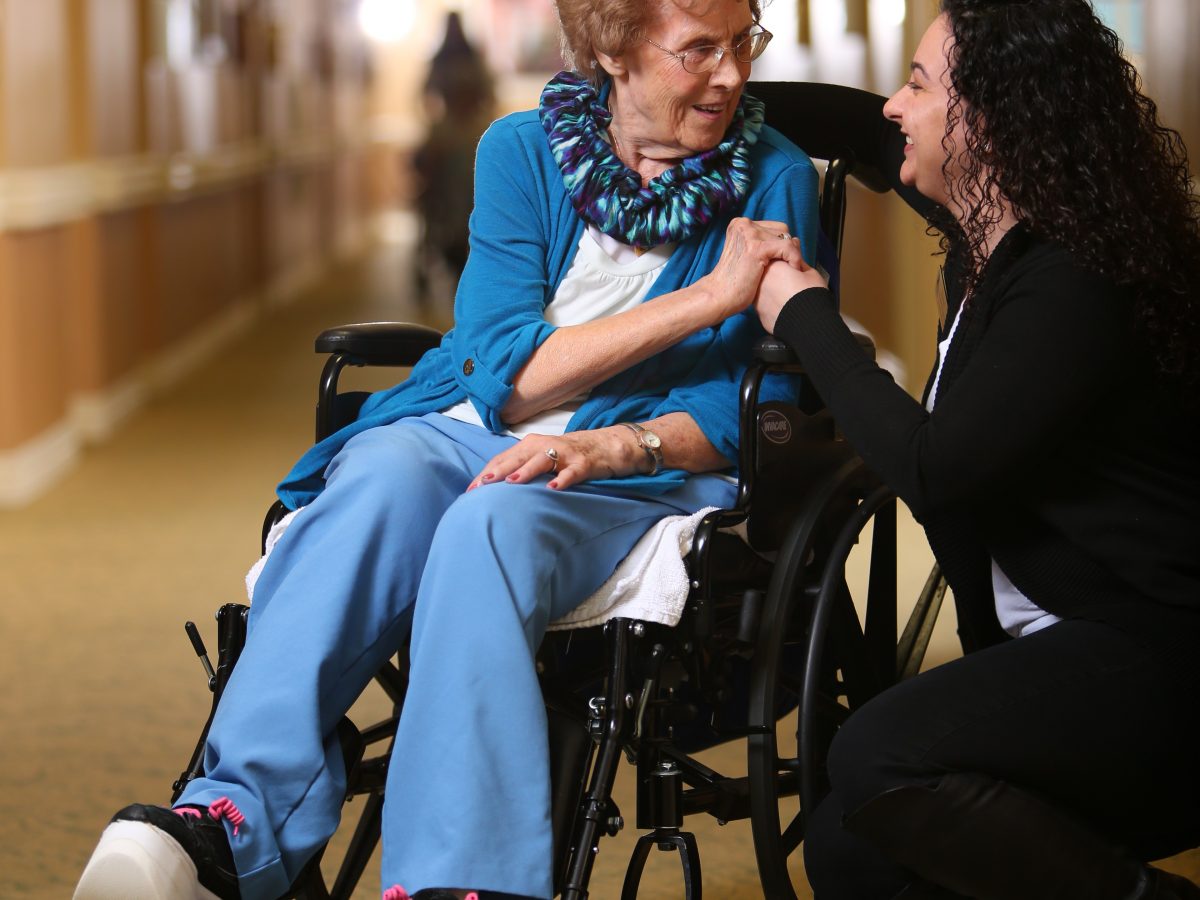
A key part of healthy aging is to keep fit. Being physically fit reduces the chance of getting diseases like stroke, type 2 diabetes and depression. It improves your overall health, and aids seniors in maintaining their independence. However, it isn't always easy to start and maintain an exercise program.
If you're an older adult, it's a good idea to consult with a physician before starting an exercise routine. Your doctor can assess your health and suggest the best type of exercise for you. Your health may dictate that you start out with gentle exercise and gradually increase your intensity.
One of the best ways to get started is to find a gym that offers fitness classes specifically for older adults. Seniors are often offered discounts at these gyms. You can also find a personal trainer who can help you develop an exercise program suited for your age. It is possible to invite your friends and family members to join you in your exercise program.

You can start by doing simple chair exercises, and then move up to more difficult activities if you are new to exercising. Warm up and cool off before you start. Exercise can help you lose weight and stress, as well as improve your physical fitness.
Strength training exercises increase muscle strength and endurance. This also reduces the chance of falling. These exercises include single legs, stair climbing and light handweights.
Stretching is another important part of any exercise regimen. Stretching is a great way to relieve stiffness, pain and inflammation. Stretching can help improve flexibility and range-of-motion. Stretching should be done for between 15 to 30 second intervals in order to get the most from your routine. To ensure you are warm and ready for the next exercise, it is a good idea do some stretching prior to each one.
Cardio exercise is a great way for older adults to move. In addition to increasing energy levels, cardio exercise improves cardiovascular function. The heart pumps more blood and oxygenated blood throughout the body, resulting in better overall health. Walking, swimming, biking and dancing are all aerobic activities that can increase your heart rate. They also strengthen your lungs.

Senior adults may also find strength training beneficial. Strength training increases bone density, which lowers the risk of developing osteoporosis. Strength training exercises are a great way for older adults to be more active. This is particularly important for those who have lost muscle mass. For older adults, strength training that increases muscle strength and maintains balance is the best.
It's common to feel discouraged and frustrated when you start an exercise routine. You may think it's too difficult or too expensive to get started with an exercise program. In fact, exercise can be as beneficial for older adults as it is for younger people.
Many activities can be added to your exercise regimen, including yoga and taichi, running, walking, biking, swimming, and biking. But you should also consider some endurance activities, like mowing the grass or climbing stairs. If you are unable to exercise on your own, you can find a group exercise class at your local recreation center. It is a great idea to ask other seniors in your community what activities they enjoy.
FAQ
How can you live your best life every day?
It is important to identify what makes you happy. You can then work backwards once you have identified your happiness. Asking others about their lives can help you to see how they live the best life possible.
You can also read books by Wayne Dyer, such as "How to Live Your Best Life". He talks about finding happiness in all areas of your life and finding fulfillment.
What causes weight loss as we age?
How can I tell if my bodyweight changes?
Weight loss occurs when there is less fat than muscle mass. This means that calories must be consumed at a rate greater than energy. Activity levels are the most common reason for weight loss. Other reasons include poor eating habits, stress, hormone imbalances, certain medications and illness. If there is more body fat than muscle mass, then weight gain can occur. It happens when people consume more calories in a day than they actually use. The most common causes are overeating, increased activity, hormonal changes, and excessive calories.
The main reason why our bodies lose weight is because we consume fewer calories than we burn. When we exercise regularly, we increase our metabolism rate which burns off more calories throughout the day. However, this doesn't mean that we'll necessarily get thinner; what matters is whether or not we're losing fat or gaining muscle. If we are burning more calories than what we eat, then we will lose weight. However, if you consume more calories than you burn, you'll end up storing them for fat.
As we get older, we tend not to be as mobile and move as fast. We also tend not to eat as much food as we used to when we were younger. Also, we are more likely to gain weight. On the other hand, we have more muscle mass and look larger than we actually are.
Without weighing yourself each week, there is no way to know how much weight you have lost. There are many methods to measure your weight. You can also measure your waistline, your hips or your thighs. Some people prefer to use bathroom scales while others like to use tape measures.
If you want to track your progress, you should try weighing yourself once a week and measuring your waistline once a month. You can also take photographs of yourself every few years to track how far your progress has been.
Online data can be used to determine your weight. For example, if you're 5'10" tall and weigh 180 pounds, you'd probably weigh 180 pounds.
What are the 7 best tips for a healthy and happy life?
-
You should eat right
-
Exercise regularly
-
Sleep well
-
Get plenty of water.
-
Get enough sleep
-
Be happy
-
Smile often
What are the 10 most delicious foods?
The following are the 10 best foods to consume:
-
Avocados
-
Berries
-
Broccoli
-
Cauliflower
-
Eggs
-
Fish
-
Grains
-
Nuts
-
Oats
-
Salmon
How often should I exercise
A healthy lifestyle requires regular exercise. You don't have to exercise for a certain amount of time. The key is finding something you enjoy and stick with it.
It is a good idea to exercise at least three times per week. Then, you should aim to do between 20 and 30 minutes of moderate-intensity activity. Moderate intensity will mean that you'll continue to be exerting yourself afterward. This type works out burns around 300 calories.
Walking is a great option if you are a keen walker. You can do 10-minute walks four days per week. Walking is low-impact, easy on the joints, and it's very gentle.
You can also run for 15 minutes, three times per week. Running is an excellent way to lose weight and tone your muscles.
Start slowly if you aren't used to doing exercise. Begin with 5 minutes of cardio every other day. Gradually increase the duration until you reach your goal.
What are the top 10 healthy habits?
-
Have breakfast every day.
-
Don't skip meals.
-
Keep a balanced diet.
-
Drink plenty of water
-
Take good care of your body.
-
Get enough sleep.
-
Stay away from junk foods.
-
Do some form of exercise daily.
-
Have fun
-
Meet new people.
Statistics
- WHO recommends consuming less than 5% of total energy intake for additional health benefits. (who.int)
- According to the Physical Activity Guidelines for Americans, we should strive for at least 150 minutes of moderate intensity activity each week (54Trusted Source Smoking, harmful use of drugs, and alcohol abuse can all seriously negatively affect your health. (healthline.com)
- This article received 11 testimonials and 86% of readers who voted found it helpful, earning it our reader-approved status. (wikihow.com)
- According to the 2020 Dietary Guidelines for Americans, a balanced diet high in fruits and vegetables, lean protein, low-fat dairy and whole grains is needed for optimal energy. (mayoclinichealthsystem.org)
External Links
How To
What does "vitamin" actually mean?
Vitamins are organic compounds that can be found in foods. Vitamins allow us to absorb nutrients from food. Vitamins cannot come from the body so food must provide them.
There are two types: water-soluble and fat-soluble vitamins. Water-soluble vitamins dissolve in water easily. Examples include vitamin C,B1 (thiamine), B2 (riboflavin), B3 (niacin), B6 (pyridoxine), folic acid, biotin, pantothenic acid, and choline. The liver and fatty tissue are the main storage places for fat-soluble vitamins. Vitamin D, E, K and A are some examples.
Vitamins can be classified by their biological activity. There are eight major groups of vitamins:
-
A - Vital for healthy growth.
-
C - vital for nerve function and energy generation
-
D - essential for healthy teeth and bones.
-
E - needed for good vision and reproduction.
-
K - Essential for healthy muscles and nerves.
-
P - vital for building strong bones andteeth.
-
Q - aids digestion and absorption of iron.
-
R - Required for red blood cell production
The recommended daily allowance of vitamins (RDA), varies depending upon age, gender, physical condition, and other factors. The U.S. Food and Drug Administration has established the RDA values.
For adults over 19 years, the RDA is 400 mg per day for vitamin A. For fetal development, pregnant women require 600 micrograms per daily. Children ages 1-8 require 900 micrograms per day. Children under 1 year old require 700 micrograms daily, while infants over one year old need 500 micrograms every day. This decreases between 9 and 12 months.
Children aged between 1-18 years old who are obese require 800 micrograms per Day, while overweight children need 1000 micrograms every day. Children underweight or obese will require 1200 micrograms a day to meet their nutritional requirements.
Children aged 4-8 who have anemia are required to consume 2200 micrograms of Vitamin C daily.
Adults over 50 years of age need 2000 micrograms per day for general health. Women who are pregnant or breastfeeding need 3000 micrograms per day due to increased nutrient requirements.
1500 micrograms are required daily by adults over 70 because they lose approximately 10% of their muscle each decade.
Women who are pregnant or lactating need more than the RDA. Pregnant mothers need 4000 micrograms per daily during pregnancy and 2500 after giving birth. Breastfeeding mothers require 5000 micrograms daily when breast milk production is occurring.